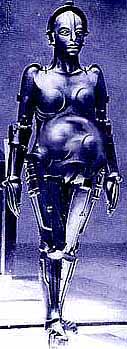
The (D)evolving Icon
Icons seem to be in the air these days. In one month I will speak in Saskatchewan about the loss of a prairie icon: the grain elevator. These striking buildings that represent Saskatchewan's reputation as the bread basket of our nation are being torn down with the erosion of the family farm and the rise of agricultural corporations like Monsanto.
An icon is an image of an idol. The representation of a sacred entity is controversial, some religions believing that the manufacturing of a physical icon is a degradation of what it is supposed to represent. Similarly, there are indigenous people who believe a photograph can degrade you by capturing your soul. Creating icons can be risky. As artists we are often simultaneously icon makers and icon breakers, or iconoclasts. Breaking down collective icons inevitably offends a group of people in the community we are working in.
In the physical world, our archaic physical icons are ravaged by weather and the effects of time. In the analog world of photography and video tape, decay is a relatively quick process. But what of the "decay" of the pixel? Pixelizing an image changes its quality, but posting that image on the internet risks it being buried in the sheer volume of pixels in cyber-space. Also, posting an image without protecting it from hackers leaves it open to a different kind of degradation: alterations by pornographers and hate groups being the most worrisome.
Mechanische Mutter
There are a deluge of romanticized stereotypical images of motherhood in the North American advertising industry. Maybe that's part of why the reality of motherhood was such a shock to me. My child had a very unnatural birth. Because of complications, he was taken out surgically, by Cesarean Section. I spent ten days in the hospital, two of them hooked up to a group of life-support machines. As soon as I was fully conscious and on the road to recovery, I was presented with an electric breast pump to provide milk for my child. On one day in my hospital ward, half the women were using breast pumps because their babies were not nursing in the natural way. (I had this Brave New World image of all of us hooked up to one giant machine, pumping milk through a system of tubes directly into the nursery where our babies were.) Ironically, using the breast pump was my favorite time in the hospital, its rhythmic sound was comforting, as was the sound of the milk being squirted into the bottle.
With this traumatic birthing experience, my romantic ideas about having a natural birth and breast feeding went out the window. Instead, I was left to appreciate the science of contemporary motherhood. I am a cyborg mother, or eine Mechanische Mutter.


Duet
There is a strong tradition of family portraiture in our culture. I remember at ages 7 and 13, being dragged with my sister to a professional photographer to have our portraits taken. It seemed silly to invest so much in these images since they were contrived compared to the ones my father took, who is an excellent amateur photographer. Nevertheless, a pile of money was invested into framing these stiffly posed photos to be hung in a prominent place in the family home.
Family portraits are extremely potent icons. They are constructed to make the most chaotic family look unified and happy. I am more interested in presenting the dynamic imagery of the comedy and tragedy, the excitement and boredom that exists in family life. In this way I believe I can encourage our family to develop its full potential range of expressiveness in our relationships, breaking down the formal iconic tradition and replacing it with something more playful.